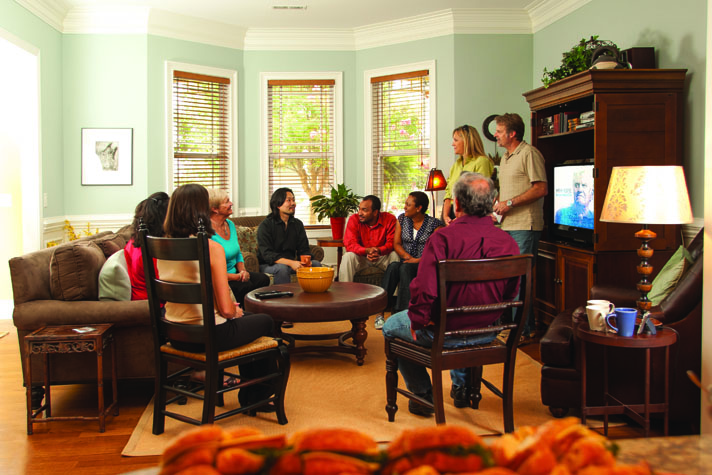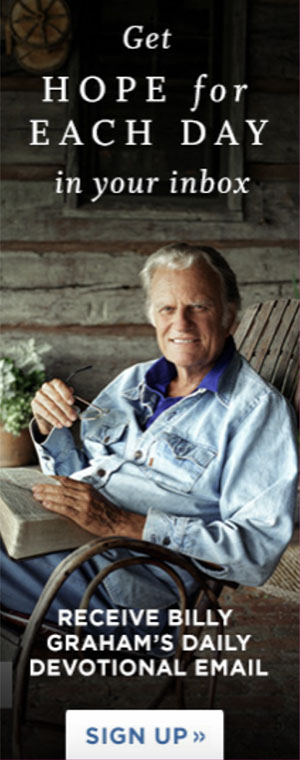
Six months before Christians across the United States open up their homes to share the Gospel with friends and family, 12,279 churches have signed up to participate in the November outreach.
My Hope America with Billy Graham isn’t taking place in a stadium or a church–it’s happening in houses and apartments in cities large and small. And while the project will culminate with a November event, it’s not a one-day kind of deal. My Hope is about building authentic relationships, and that takes time.
“My Hope is not about bait and switch,” said the program’s executive director, Bill Conard. “It’s about building authentic relationships, and in a cordial way, bringing people to Christ and then leading them on in Christ.”
Conard, along with a dedicated team of My Hope staff fanned out across the country, has been working on the project since January, 2012. They divided the U.S. into 14 regions and began reaching out to pastors from a wide swath of denominations, helping them show their congregations how to build up “Matthews.”
“Matthews” are believers who will open their homes to unbelieving friends and neighbors this November to share their faith, much like the disciple Matthew invited his friends over to meet Jesus 2,000 years ago.
Families who invite their friends over are encouraged to be up front about why they’re getting together.
They might share dinner or a cup of coffee before showing a 30-minute video that intertwines a Gospel message from Billy Graham with true stories of people who have collided with God’s life-changing love. The video will be available via TV, DVD, and online streaming. Once it’s over, the “Matthews” will share their own testimonies before leading their friends to a moment of decision–a time to choose whether they want to invite Jesus into their lives for good.
With six months to go until the culmination of My Hope, more churches are signing up every day.
“The numbers are changing all the time,” said Conard. “Thank the Lord they’re growing.”
One region that is doing especially well is the Northeast, where My Hope has seen a great response.
“I think it’s because the pastors and churches recognize the validity of relationship evangelism in a culture that has not been friendly to evangelical Christians,” said Conard.
So, what does signing up for My Hope look like?
For a Cornelius, N.C., woman, it looks like small acts of kindness in her neighborhood–a little gardening here, a cup of coffee there.
In one Hagerstown, Md., church, it looks like four Sundays in May dedicated to the My Hope concept, teaching the congregation how to become “Matthews.”
And for a group of pastors in Greenville, S.C., it means setting aside money to pay for refreshments for all of the “Matthew” families that open up their homes, taking the financial burden off their shoulders and “eliminating every excuse.”
Whatever My Hope looks like from one home to the next, it all comes down to relationships, and with six months to go, there’s still time to get involved.
“My Hope encourages people to build authentic relationships, which lead to salvation, and then facilitate long-term discipleship,” said Conard.
Preparation may only take a few months. The actual event–just a couple hours. But when God moves in the United States, the reverberations could last for generations, and the decisions made–for eternity.
Click here to watch the My Hope pilot video and get a taste of what will be shown this November.
Click here to sign up for a My Hope preparation meeting near you.
Click here to take the My Hope preparation course online.

